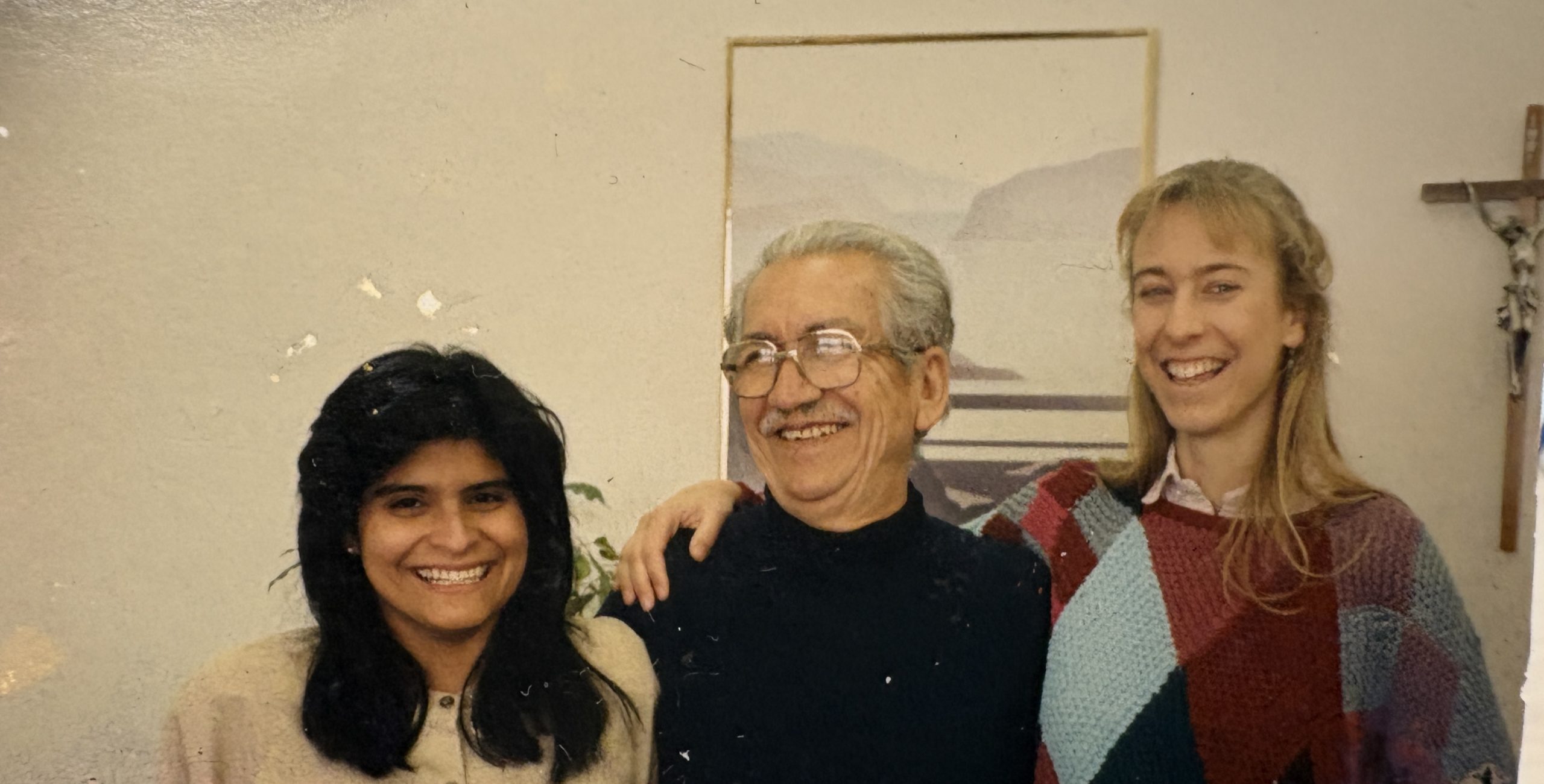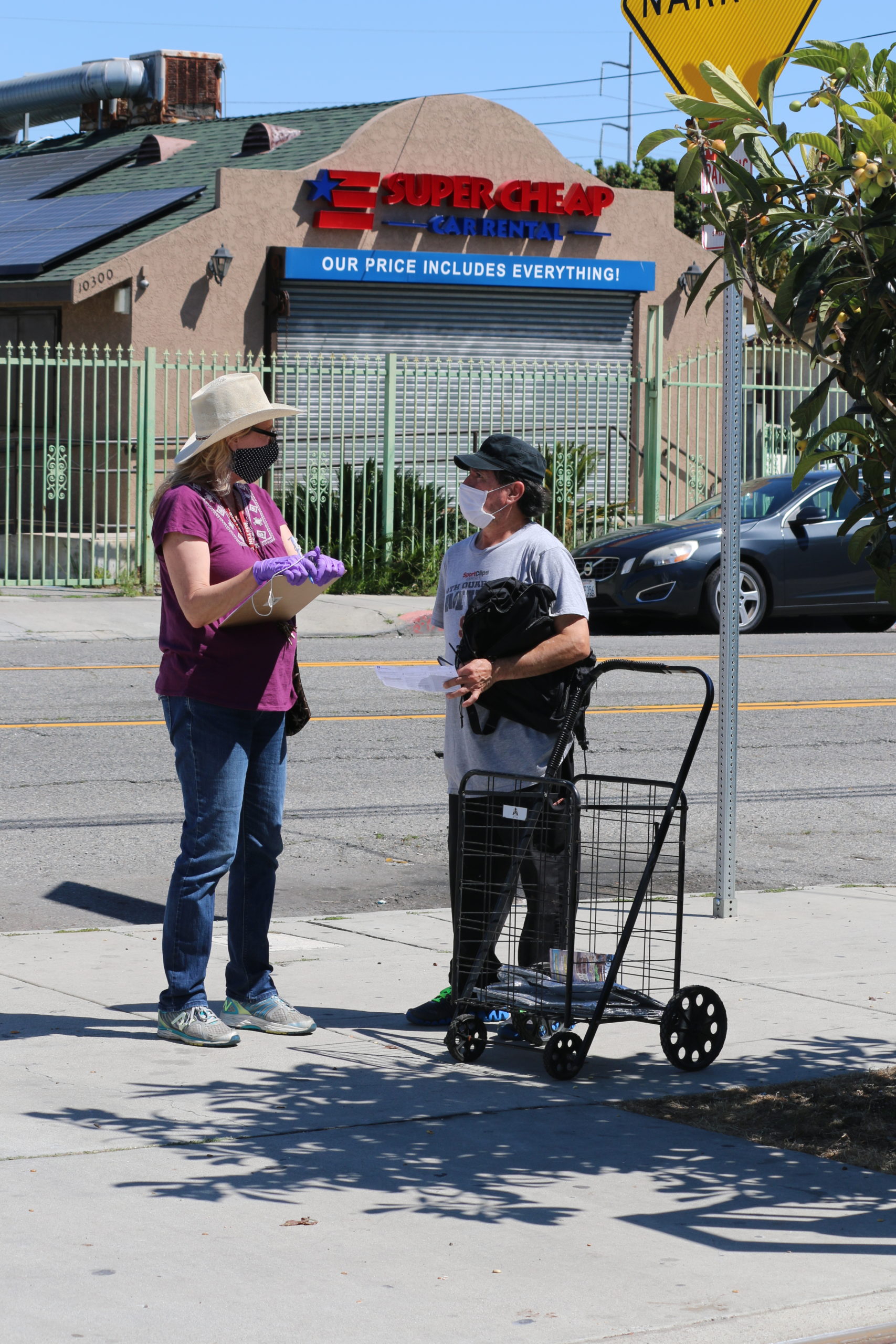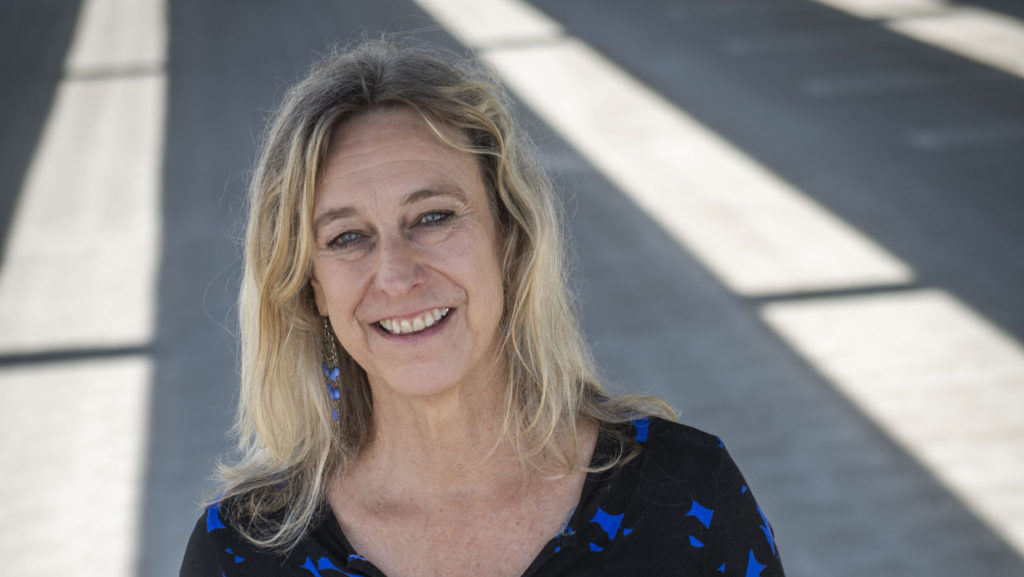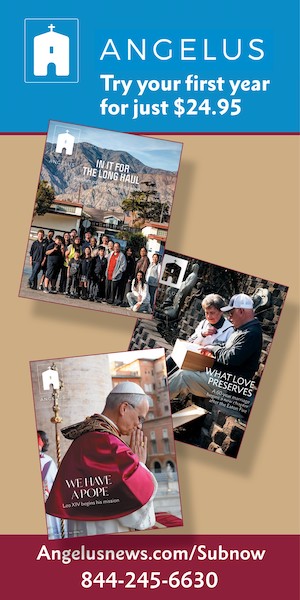Sept. 30 will mark 40 years since Mary Agnes Erlandson walked in the door of a Catholic Charities office in Culver City for her first day of work as a bilingual secretary.
The year was 1985, and she was fresh off an extended trip to Mexico and Ecuador, where she’d touched the reality of Third-World poverty, and saw the humble faith that welcomed St. Pope John Paul II on his 1985 visit to Ecuador.
That job didn’t last long. Less than two years later, Erlandson was asked to open and lead a new Catholic Charities location in Lennox, an unincorporated corner of Los Angeles just east of LAX Airport. Under her leadership, the St. Margaret’s Center has grown into a hub for the area’s neediest residents, offering a long list of services for everyone from expectant mothers to lonely seniors to frightened immigrants.
The center’s success has made Erlandson, who grew up in nearby Westchester and San Pedro and attended Loyola Marymount University, one of the most recognized and respected faces on LA’s Westside. All kinds of people — from priests to politicians to generations of former volunteers — seek her counsel.
Before her planned retirement date of Sept. 30, Erlandson spoke to Angelus about what’s changed over 40 years, and what might be next.
How did you end up getting this job?
I worked at a restaurant at LAX. There was a busboy who was arrested on Christmas Eve and he was put in jail. I didn't really know him that well, but I just took it on as kind of a mission to help him because he was all alone here. He was a Mexican immigrant. So I used to visit him in jail. And then I got all of our co-workers to collect money for him. We hired a lawyer and then I used all the money I had saved to travel to South America to bail him out.
That whole experience really got me feeling that this is what I wanted to do with my life. So then I went down to South America, and when I was coming back, my sister-in-law saw an ad for a bilingual secretary at Catholic Charities, and I applied.

Thinking back to the kinds of people and cases you dealt with back in 1985, how has the face of poverty in LA changed in the last 40 years?
When St. Margaret’s Center first opened, it was the year President Reagan passed the Immigration Reform and Control Act (IRCA), known as the amnesty program.
We were super involved with that. We were pre-screening thousands of people and helping them to apply for it.
When you compare that time, when there was active work going on in the community in the Church to bring these people into becoming residents and citizens, to now, it’s like the polar opposite. There was so much excitement back then with that program. It was just a great time to work.
The housing situation was also very different back then. Here in Lennox, Inglewood and Hawthorne, a lot of landlords were offering the free rent for the first two months. There were more available units than people. And now the housing market has become so much tighter. The vacancy rate is much lower, and housing prices have skyrocketed. For low-income people, housing is such a primal thing in their life. I mean, the most important thing is having a roof over your head.
I would also say that people earning minimum wage are really struggling more now than even back then.
Looking back, what was the toughest crisis or event you’ve seen for the people that the St. Margaret’s Center serves?
The 1994 LA Riots were a really scary time. A lot of buildings were burned near us, and stores closed that never reopened. It kind of changed the whole landscape of this area.
One of the most traumatic times was the COVID pandemic, having to completely change how we did things, while really cutting back on services and trying to do things virtually. We never closed during the pandemic, we were always open.
But I also feel that the current situation with the ICE raids is equally devastating. About 75% to 80% of the people we serve are Latino immigrants, and I’ve never never seen the kind of fear that we’re seeing now. People are sometimes afraid to even come out to our food pantry. It’s devastating.

What has been your favorite part of the job, or something you’re proudest of?
The people that I work with. The people that we serve, of course, are great. But the volunteers I’ve worked with over the years have always astounded me by their generosity. Some of them have been working here for decades. They’re so faithful and give with so much love in their hearts.
One of the major things for me has also been working with mission-driven staff, the people that I’m surrounded by every day. I’m proud that we’ve built the center, which has gone from offering one or two services to everything that we offer now.
It takes a lot of coordination, especially at a small site, to try to make everything work in cohesion, but we do it. I feel that we still have this kind of sense of community that people who come here really feel that we’re family. Some of our staff have been here for as long as I have. It’s a real community, and I think that’s commendable.
After 40 years of such a fast-paced job, do you have anything planned to help you adjust to retirement?
The first thing I want to do is the Camino de Santiago in Spain. I want a good, long 500-mile walk to kind of center myself and then figure out what I want to do in the next phase of my life, because I’m not done. I’ll be a great volunteer somewhere, I’ll tell you that.
For more on Erlandson’s years at St. Margaret’s Center and a new campaign in her honor, visit smclennox.org/legacy.

